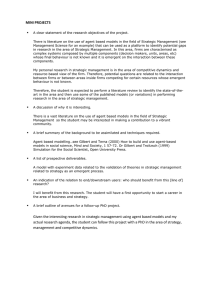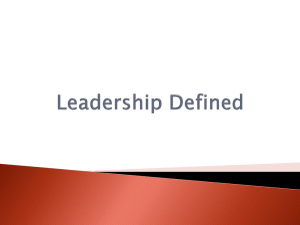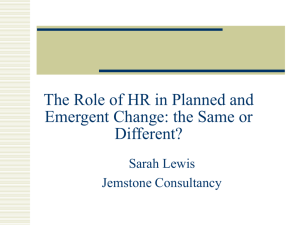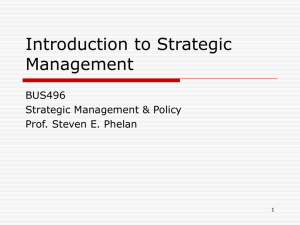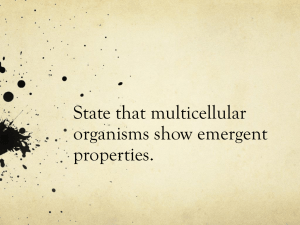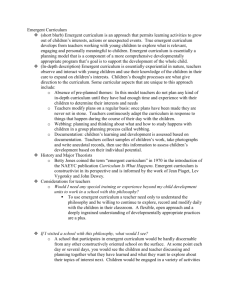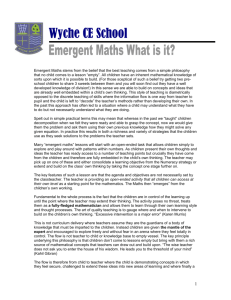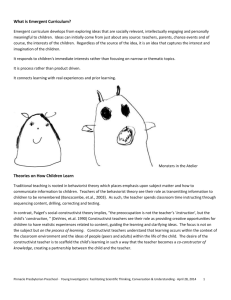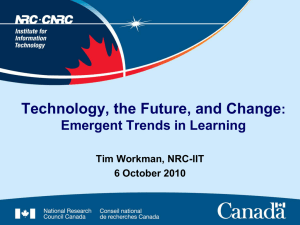Nelson Phillips Slides 1
advertisement
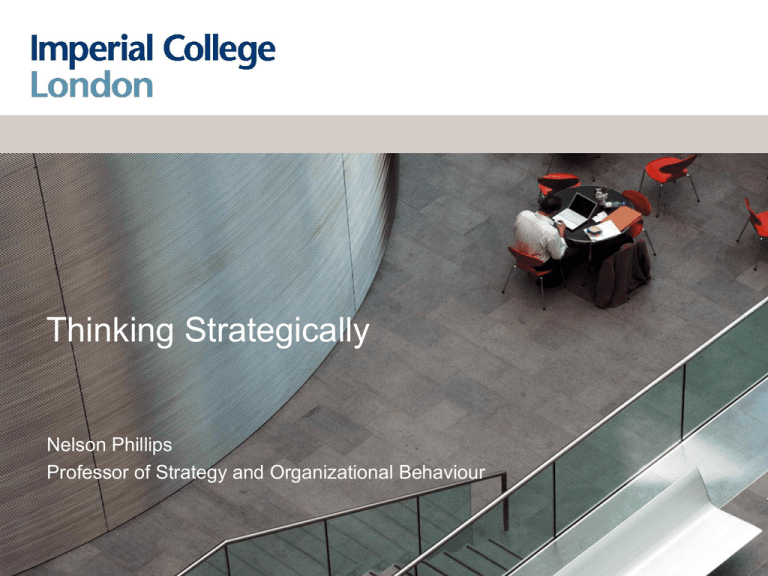
Thinking Strategically Nelson Phillips Professor of Strategy and Organizational Behaviour Who am I…. • Nelson Phillips • n.phillips@imperial.ac.uk What is strategy? What business strategy is all about is, in a word, competitive advantage … the sole purpose of strategic planning is to enable a company to gain, as efficiently as possible, a sustainable edge over its competitors. Corporate strategy thus implies an attempt to alter a company’s strength relative to that of its competitors in the most efficient way. – Kenichi Ohmae What is strategy? • Why do some industries make so much more money than others? – Tobacco, Pharmaceuticals, PSF’s • Why do some firms make windfall profits year after year? – Microsoft, Wal-Mart, IKEA, Wachtel Lipton What is strategy? • Not operational efficiency! • Good strategies create competitive advantage: – Doing something others do but better • Examples? – Doing something that no one else does • Examples? – Must be difficult to imitate – Must have value for clients • Firm level strategy is often a portfolio Strategy as a plan • Strategy is a consciously intended plan – Made in advance – Conscious and purposeful • Can be a ploy – Market signaling – Announcements Strategy as a Plan - Airbus Strategy as position • Strategy is understand as a position in an environment – Firms look for a niche • When there is a match between the firms positioning and the environment then the firm is successful – Can be the result of evolution or planning – Position can be to beat the competition or to avoid direct competition Strategy as a Position - Louis Vuitton Strategy as perspective • • • • Strategy as a way of looking at the world The “personality” of the organisation Shared throughout the organisation Often difficult to express 11 iPhone combines three products — a revolutionary mobile phone, a widescreen iPod with touch controls, and a breakthrough Internet communications device with desktop-class email, web browsing, maps, and searching — into one small and lightweight handheld device. iPhone also introduces an entirely new user interface based on a large multi-touch display and pioneering new software, letting you control everything with just your fingers. So it ushers in an era of software power and sophistication never before seen in a mobile device, completely redefining what you can do on a mobile phone. 12 Strategy as revolution • Strategy is not about beating the competition, it is about making them irrelevant. – Focus on creating value – Focus on mass of customers even if some current customers are lost – Focus on total experience of customer – Ignore traditional industry boundaries and product definitions Strategy as Revolution - easyJet A Value Curve Strategy as pattern • Strategy can be thought of as a pattern in a stream of actions • Not necessarily intended • Evolve over time and grow out of experience – Honda in the US “Gradually the successful approaches merged into a pattern of action that becomes our strategy. We certainly don’t have an overall strategy on this.” Strategy as an emergent process • Strategy making in an unpredictable world – Creates the necessity for flexible strategic approaches. • Strategy making by lower-level managers – Strategy evolves through autonomous action. Strategy as an emergent process • Serendipity and strategy – Accidental discoveries and happenstances can have dramatic effects on strategic direction. • Intended and emergent strategies – Realised strategies are combinations of intended and emergent strategies. Intended and emergent strategies Source: Reprinted from “Strategy Formation in an Adhocracy,” by Henry Mintzberg and Alexandra McGugh, published in Administrative Science Quarterly, Vol. 30, No. 2, June 1985, by permission of Administrative Science Quarterly. Intended and emergent strategies Customer Orientation and Business Definition Abell’s Framework for Defining the Business – Consumer-oriented versus Product-oriented business definition Source: Derek F. Abell, Defining the Business: The Starting Point of Strategic Planning (Englewood Cliffs, N.J.: Prentice-Hall, 1980), p. 17. Mission and Goals • Mission – Sets out why the organization exists and what it should be doing. • Major goals – Specify what the organization hopes to fulfill in the medium to long term. • Secondary goals – Are objectives to be attained that lead to superior performance. Vision, or Mission • A statement of purpose (strategic intent) committing the organization to ambitious overarching (stretch) goals. – Provides a sense of direction and purpose. – Drives strategic decision making and resource allocations. – Forces the seeking of significant performance improvements to attain goals. A New Mission for Robin Hood Read the Robin Hood case. Answer the following questions in small groups. 1. What are the main strategic problems facing Robin Hood? 2. Develop a new mission statement for Robin. What are the strategic implications of your new mission statement?
